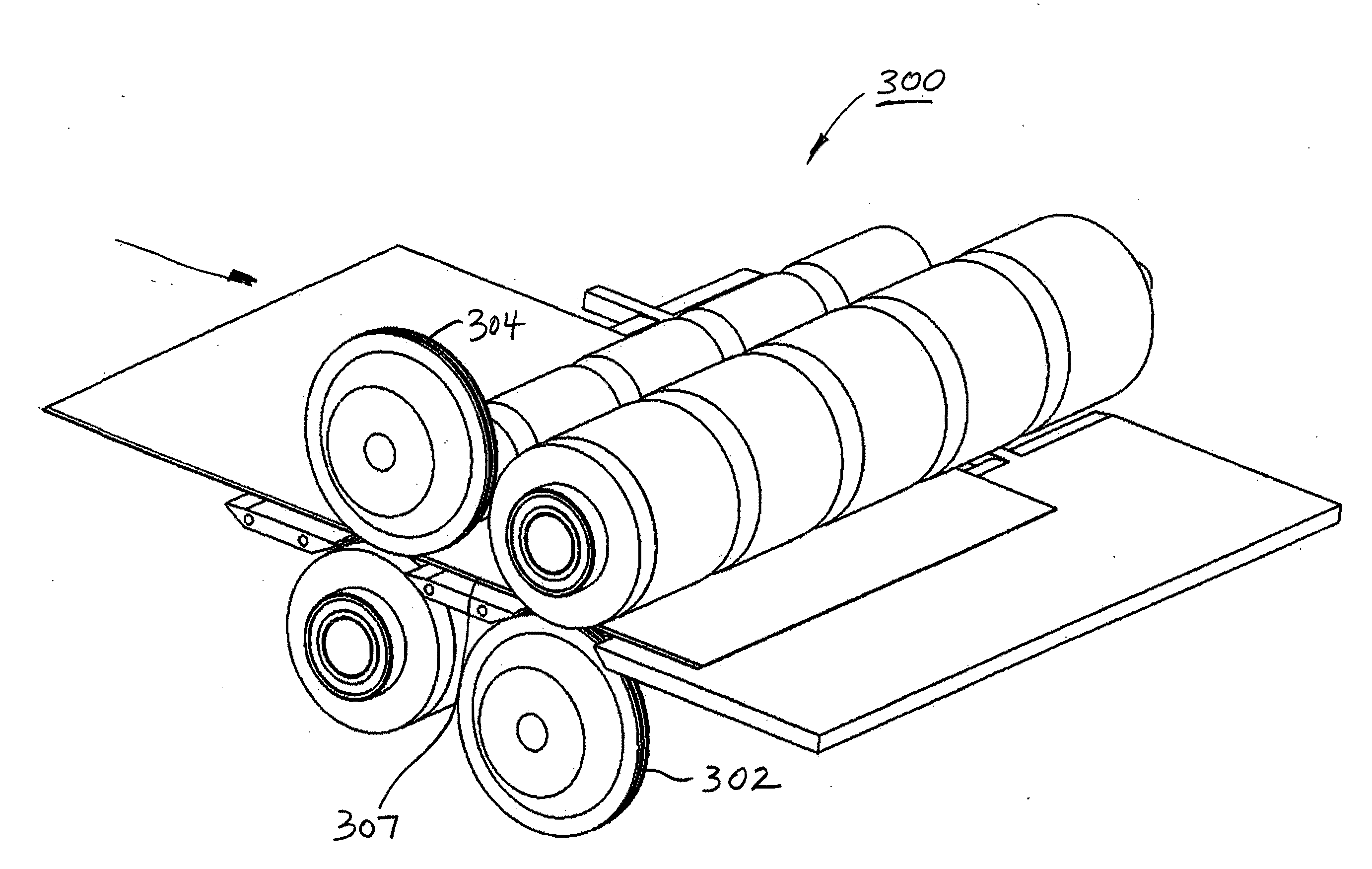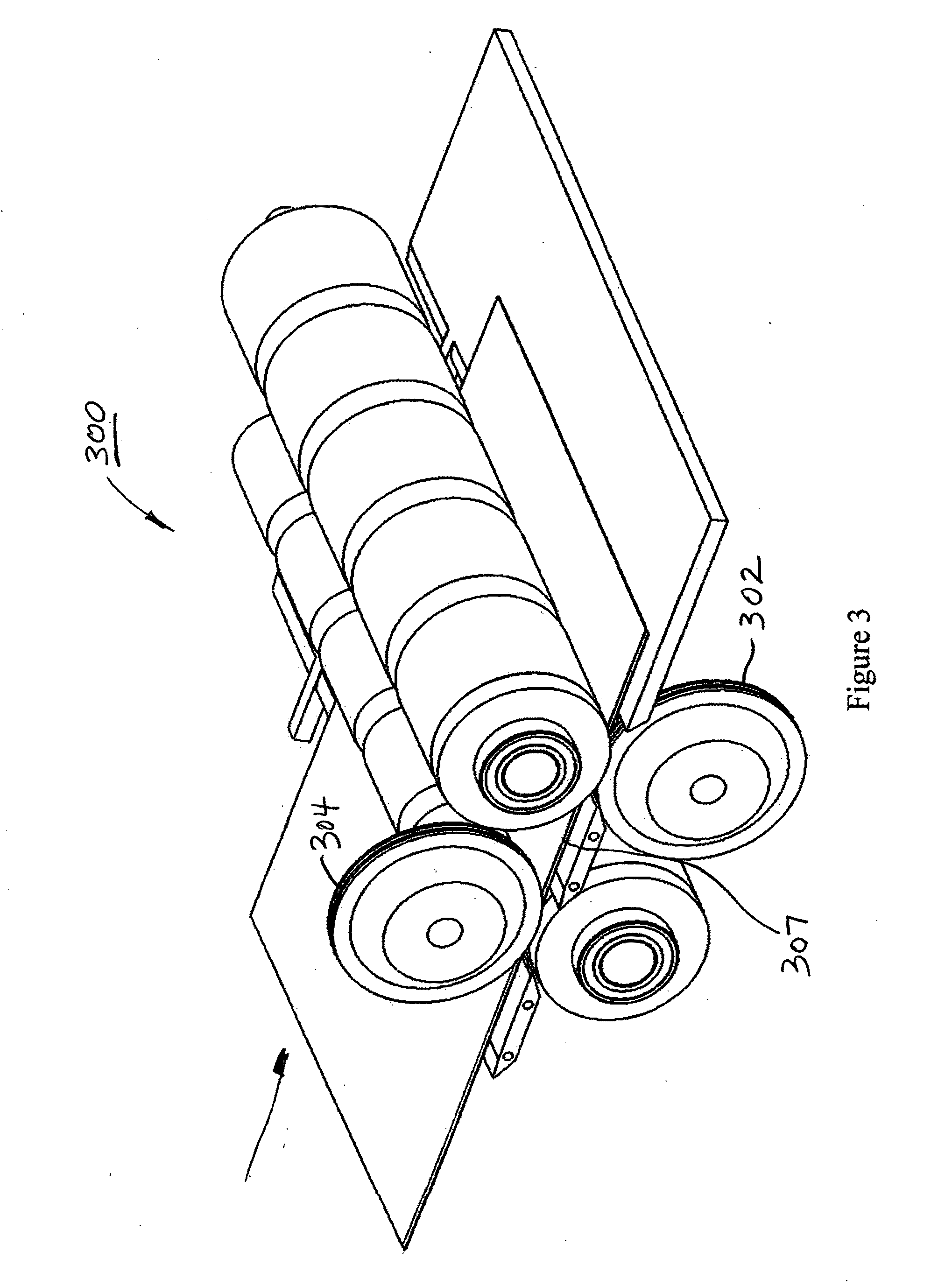Sheets formatted for use in binding machines
a technology of binding machine and sheets, applied in the field of sheets, can solve the problems of difficulty in adhesion of adhesives to the surface, sheet is typically not bound, other difficulties in bookbinding, etc., and achieve the effects of reducing the thickness of sheets, increasing the surface area for adhesion, and improving the bind quality
- Summary
- Abstract
- Description
- Claims
- Application Information
AI Technical Summary
Benefits of technology
Problems solved by technology
Method used
Image
Examples
second embodiment
[0050]FIG. 6 shows the present invention wherein the material is removed from sheet 320 in a manner creating a step 321 having a single surface 322 formed by an abrading step.
[0051]FIG. 7 illustrates a book block of sheets 320 ready for binding, the gaps 324 between sheets 320 allowing adhesive to migrate between the sheets during the thermal bookbinding process.
third embodiment
[0052]FIG. 8 shows the present invention wherein the functions of enhancing the binding adhesion is separated from the function of the added flexibility of the sheet in the vicinity of the spine. A portion 342 of the sheet 340 separating the two sheet zones (344,346) retains the thickness of the sheet 340 (not thinned down) thereby blocking adhesive from flowing too far in between the sheets which can result in inconsistencies in the bind. Zone or hinge area 346 thus provides sheet flexibility after sheets 340 are formed in a book as shown in FIG. 9. This enables the book sheets to return to its original position after being bent or otherwise moved (i.e. after a user of the book, such as an album, flips the bound sheet for viewing and then releases the sheet).
[0053]The typical dimensions of sheet 340 are as follows:[0054]Sheet 340 thickness: 12 mils[0055]Section 346: thickness 4-6 mils, width 1 / 16″-¼″[0056]Section 342: thickness 12 mils, width 20 mils-50 mils[0057]Section 344: thick...
fourth embodiment
[0059]FIG. 10 shows the present invention wherein the transition edge 354 from sheet 360 to the hinge area 346 is tapered.
[0060]For the stress in a sheet of paper being bent as the sheets, bound to the spine (similar to a beam being bent), the following provides an analysis of the forces involved.
[0061]Referring to FIGS. 15(a) and 15(b), stress(s) in a cantilever beam (beam supported on only one end) is equal to the bending moment (M) times the distance from the neutral axis to the outermost fiber (c) divided by the moment of inertia of the beam (I).
S=Mc / I; M=Fd; I=bh3 / 12
[0062]If the thickness of the paper (represented by the variable h) varies form 4-mils to 12-mils, the stiffness represented by the moment of inertia (I) will increase by 27 times, everything else being the same. The stress when the sheet of paper corresponding to a (beam) is attached to the spine by the adhesive (and assuming that the only variable to change is the thickness of the sheet of paper (h)):
S(4-mil paper...
PUM
 Login to View More
Login to View More Abstract
Description
Claims
Application Information
 Login to View More
Login to View More - R&D
- Intellectual Property
- Life Sciences
- Materials
- Tech Scout
- Unparalleled Data Quality
- Higher Quality Content
- 60% Fewer Hallucinations
Browse by: Latest US Patents, China's latest patents, Technical Efficacy Thesaurus, Application Domain, Technology Topic, Popular Technical Reports.
© 2025 PatSnap. All rights reserved.Legal|Privacy policy|Modern Slavery Act Transparency Statement|Sitemap|About US| Contact US: help@patsnap.com



